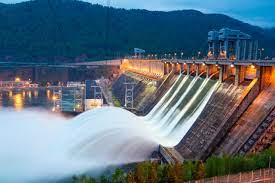Hydroelectric energy
Hydroelectric energy

Hydroelectricity is a renewable energy source.
Hydroelectricity uses the energy of running water, without reducing its quantity, to produce electricity. Therefore, all hydroelectric developments, of small or large size, whether run of the river or of accumulated storage, fit the concept of renewable energy.
Hydroelectric energy, also called hydroelectric power or hydroelectricity, is a form of energy that harnesses the power of water in motion—such as water flowing over a waterfall—to generate electricity. People have used this force for millennia.
Hydropower, or hydroenergy, is a form of renewable energy that uses the water stored in dams, as well as flowing in rivers to create electricity in hydropower plants.
- The cheapest energy source. ...
- Hydropower stations are agile and responsive. ...
- Water brings with it enormous energy. ...
- Production can be tailored to demand. ...
- Very low indirect emissions. ...
- Secondary water flows are suitable for smaller plants. ...
- Hydropower as a tool for reclamation... ...
- Renewable. Hydropower is completely renewable, which means it will never run out unless the water stops flowing. ...
- Emission Free. ...
- Reliable. ...
- Adjustable. ...
- Create Lakes. ...
- Faster Developed Land. ...
- Impact on Fish. ...
- Limited Plant Locations.
- It Has an Environmental Impact. Perhaps the largest disadvantage of hydroelectric energy is the impact it can have on the environment. ...
- It Displaces People. ...
- It's Expensive. ...
- There are Limited Reservoirs. ...
- There are Droughts. ...
- It's Not Always Safe.

TALENTS INFINITE TALENTS (TIT).
“Be the change you want to see Universally,”
👉 YOUTUBE https://www.youtube.com/@TalentsInfiniteTalents
👉 EMAIL : talents.infinite.talents@gmail.com
👉 TO JOIN US / CHAT WITH US: https://chat.whatsapp.com/BwdkONnYBM2E8Yy3RSdvu9
👉 MOBILE / WHAT’S APP NUMBER: +91 8681095579
.png)
.jpeg)
.png)
.png)














Comments
Post a Comment